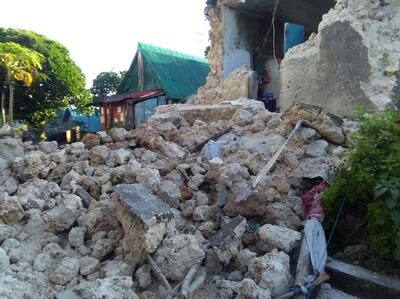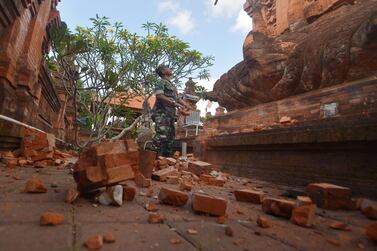Eight people were killed and dozens injured when a series of earthquakes struck islands in the far northern Philippines early Saturday, terrifying locals and sparking an urgent search of collapsed homes.
The tremors hit the province of Batanes, a group of sparsely populated islets north of the nation's largest Luzon island, toppling buildings and leaving deep cracks in roads.
Panicked residents fled their houses and patients were wheeled from hospitals as a precaution as aftershocks rattled the scenic archipelago.
Rescue crews have begun searching for any survivors trapped in pancaked structures.
The biggest of the quakes – of magnitude 5.4 and 5.9 – struck within hours of each other, according to the US Geological Survey.
Many people were still asleep when the first tremor struck around 4:15 am (2015 GMT Friday), followed just under four hours later by a second, stronger jolt.
At least three aftershocks followed, putting locals on edge.
Mayor Raul de Sagon told AFP that eight people had been killed and around 60 others were hurt. The extent of their injuries was not immediately clear.
Batanes is pounded every year by tropical cyclones and typhoons that blast through the Philippines and homes are built of stone to survive the annual onslaught.
"We always experience typhoons so houses here are made to withstand strong winds," he said. "But we were not prepared for earthquakes such as this."
Police sergeant Uzi Villa added that the timing of the quake meant many people were at home when the first tremor struck.

"We saw houses shaking. Some of the walls of the houses collapsed and fell on the victims," he told AFP.
"Some people died because they were sleeping soundly since it was still early," he added.
The Philippines is part of the Pacific "Ring of Fire", an arc of intense seismic activity that stretches from quake-prone Japan through Southeast Asia and across the Pacific basin.
The country's most recent deadly quake occurred in April when at least 11 people were killed and a supermarket collapsed in a 6.3-magnitude tremor that hit a region north of the capital Manila.
One of the world's most disaster-prone countries, the Philippines has frequent earthquakes and volcanic eruptions because it lies on the so-called Pacific "Ring of Fire," a seismically active arc of volcanos and fault lines in the Pacific Basin. A magnitude 7.7 quake killed nearly 2,000 people in the northern Philippines in 1990.





